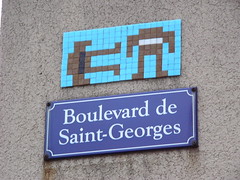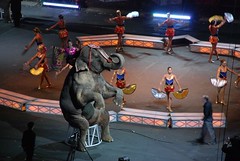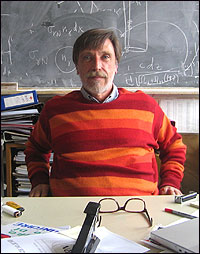
 Wow, I'm on fire today: 4 posts. Maybe it's that May 1 deadline, but maybe it's because there's just a lot of fun debate about physics going on, and a lot of it references the physics I do and love. Case in point: Lee Smolin has posted a reply to Joe Polchinski's online (Cosmic Variance guest blog) review of Smolin's The Trouble With Physics (something which I always meant to review online, but somehow lost my way...). I have no idea how I would have found this, except for randomly bumping into it on Peter Woit's webpage.
Wow, I'm on fire today: 4 posts. Maybe it's that May 1 deadline, but maybe it's because there's just a lot of fun debate about physics going on, and a lot of it references the physics I do and love. Case in point: Lee Smolin has posted a reply to Joe Polchinski's online (Cosmic Variance guest blog) review of Smolin's The Trouble With Physics (something which I always meant to review online, but somehow lost my way...). I have no idea how I would have found this, except for randomly bumping into it on Peter Woit's webpage.Anyway, I feel no particular authority to comment on most of Smolin's comments on Polchinski's comments, but just wanted to point out Smolin's comments on the applicability to heavy ion physics:
With regard to heavy ion physics, yes the applications of the AdS/CFT duality to this are interesting and important. But they should not be exaggerated. Polchinski does so when he says, “And so the quantum gravity that is manifesting itself in dual form at Brookhaven is likely to be the same one that operates everywhere else in the universe.” First because there is no quantum gravity here, in this particular application only the correspondence with classical supergravity arises. Second, what is the basis for the “likely” here? I can imagine an aether theorist making the same argument: aether theory must be right because after a lot of work the principle of relativity of inertial frames was shown to be a consequence of the dynamics of the aether, therefore since nature “uses a small number of principles in diverse ways”, the aether must be the right explanation for why this principle is observed in nature. Further, it remains the case that the calculations behind these claims are done with an extended super-symmetric theory, when real QCD has no super-symmetries at all. It may be that they get some things approximately right for reasons that have nothing to do with string theory, such as the use of a scale invariant theory to provide a rough approximation of a non-scale invariant theory, in an experimental regime which has approximate scaling.I might want to comment that for any approach to "get something approximately right", if it's "merely" scale invariance, this is somewhat of a cause for celebration in heavy ions, considering the non-perturbative regime we seem to have found ourselves. Even if string theory was a mere excuse to get to the "right" ingredients for a useful theory, then it's worth the (continually fascinating) endeavors of the string community.
That said, even I have been somewhat confused about the "ontological" status of AdS/CFT as it related to RHIC physics. I asked Polchinski about this in early 2004 (when he spoke at Quark Matter 2004 in Oakland, CA), trying to see if the applicability of AdS/CFT meant that string theory was somehow "in" the physics we do at RHIC, unification and all. I remember him having no particular difficulty in saying yes to this, as reflected in the sentence Smolin quotes. Would that it were true, but I'm still more comfortable saying that it's a "mathematical" connection between RHIC physics and black holes, leaving the more subtle (i.e. physical) connections for the experts!











